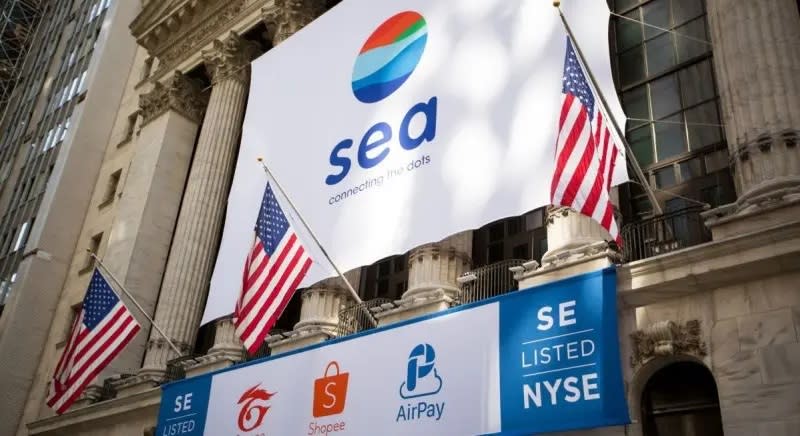DBS prefers Sea over Grab in its Asean internet coverage

In the near term, DBS expects Sea’s share price to rise towards US$75 before marching towards its 12-month target of US$100.
DBS Group Research analyst Sachin Mittal continues to prefer Sea over Grab in its internet sector coverage due to earlier breakeven target and higher long-term ebitda margin.
Mittal notes that Sea’s ebitda breakeven is expected in 3QFY2023 from 2QFY2024 previously, while Grab expects overall ebitda breakeven in 3QFY2024 from 4QFY2024 previously. That being said, long-term ebitda (in FY2027) for Sea is 6.6x higher than Grab, he highlights.
In the near term, DBS expects Sea’s share price to rise towards US$75 based on peer multiples, before marching towards its 12-month target of US$100 once group ebitda breakeven is clearly visible.
“Sea is trading at 1.9x EV/FY2023 revenue, at similar multiples to Grab’s EV/FY2023 adjusted revenue. We argue for Sea to trade at 30%-35% premium to Grab due to its scale and earlier ebitda breakeven,” Mittal adds.
DBS maintains “hold” on Grab with a higher target price of US$2.93 from US$2.58 previously on lower-than-expected cash burn.
In his industry overview, Mittal finds that Asean internet players have gradually raised their take rates to accelerate achieving ebitda breakeven instead of focusing on expansion and market share gains. Among the top three internet players (Sea, Grab and GoTo), Sea showed an impressive sequential reduction in adjusted group ebitda loss at 45%, versus 31% for Grab and 10% for GoTo, he adds.
Mittal also points out that there may be a possible slowdown in e-commerce gross merchandise value (GMV) due to lower smartphone shipment growth. According to the International Data Corp (IDC), global smartphone shipments declined by 9.7% to 302 million units in 3QFY2022, owing to high inflation, geopolitical tensions and macroeconomic challenges.
Amid this, global smartphone shipments are expected to contract by 6.5% in 2022 before bouncing back in 2023 with a 5.2% growth followed by a slowdown at a projected five-year CAGR of 1.4%.
“Consequently, we expect a slow growth in e-commerce GMV in the coming years due to the projected sluggish growth of smartphone penetration. According to the projected data, the Southeast Asia region’s four-year smartphone penetration CAGR growth will be 2.4% for the 2023-2026 period, compared with a growth of 6.8% in 2021,” says Mittal.
For FY2019-FY2021, Shopee recorded a GMV CAGR of 89% as pandemic triggered consumers to embrace e-commerce for shopping, grocery purchases as well as discretionary purchases. As economies reopen, physical stores are making a comeback.
As such, Mittal has lowered Sea’s GMV CAGR during FY2022-FY2024 downwards from 17% to 10%. On the back of declining GMV growth prospects for Shopee, take rates are expected to rise as Sea focuses on achieving ebitda breakeven by 3QFY2023.
“This should lead to an e-commerce revenue CAGR of 25% during FY2022-FY2024, 400 basis points lower than our previous projections,” adds Mittal.
Meanwhile, Grab’s rising take rates and lower incentives for earlier breakeven might hurt business growth, says Mittal.
During 3QFY2022, Grab’s group adjusted ebitda losses narrowed to US$160 million. Deliveries segment recorded adjusted ebitda breakeven for the first time during 3QFY2022 at US$9 million, three quarters ahead of the company’s 2QFY2022 guidance.
This is primarily supported by incentive optimisation and increased contribution from Jaya Grocer, although lower incentives and discounts led to a 1.5% sequential drop in deliveries GMV.
Delivery take rates are rising for four consecutive quarters reaching 21.2% in 3QFY2022 and mobility take rates have remained consistent above 23%. DBS believes take rates have minimum room to improve while mobility take rate seems to have reached its peak level.
Grab’s delivery recorded a GMV CAGR of 70% during FY2019-FY2021. However, as the company is more focused on achieving group ebitda breakeven by 2HFY2024, GMV growth can have a slowdown, says Mittal.
Hence, DBS has lowered Grab’s delivery GMV CAGR estimates during FY2022-FY2024 downwards from 16% to 9%. “Amidst the declining GMV growth prospects for delivery, take rates are expected to remain stable at current rates as Grab focuses on achieving ebitda breakeven by 3QFY2024, hence this should lead to a revenue CAGR of 10% during FY2022-FY2024, 700 basis points lower than our previous projections,” says Mittal.
DBS’s bear-case fair value for Sea is US$55 based on a 16% ebitda margin assumption in FY2027 and a 10x EV/ebitda multiple. On the other hand, its bear case value for Grab is US$2.26, based on a 10% ebitda margin assumption in FY2027 and 10x EV/ebitda multiple.
Shares in Sea and Grab closed at US$2.95 and US$55.63 respectively on Nov 23.
See Also:
Click here to stay updated with the Latest Business & Investment News in Singapore
GoTo's valuation more reasonable, UOBKH upgrades to 'hold' with lower TP
DBS cuts overall DPU estimates and target prices for S-REITs on slower growth momentum
DBS maintains 'buy' on Digital Core REIT on further DPU accretion
Get in-depth insights from our expert contributors, and dive into financial and economic trends